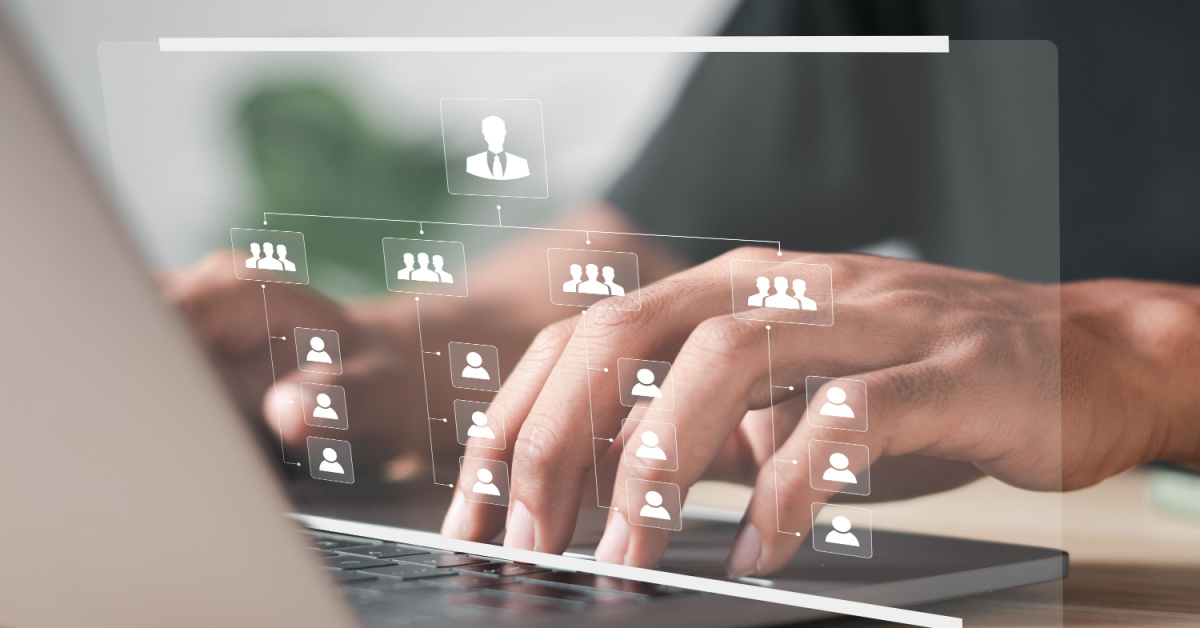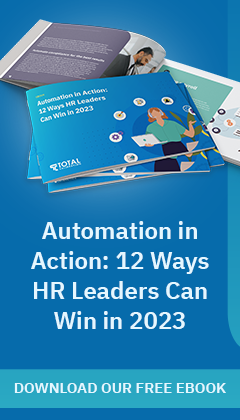HR teams manage a lot of processes. They are responsible for myriad changes and tasks, including recruitment, onboarding, offboarding, position changes, remuneration changes, performance management, leave management, and learning management and keeping employee information up-to-date. Too often, they are overwhelmed by the sheer amount of information they have to keep track of, and their chances of error and non-compliance increase with the number of manual processes they have.
Another frequent problem is communication. With so many people in an organisation, it can be difficult for HR teams to ensure that everyone is on the same page and that the right people receive the right messages. This is complicated further when an organisation has people working across multiple locations or in a hybrid environment.
Fortunately, modern automation platforms can alleviate these issues by streamlining processes and providing HR teams with powerful tools for managing data and communication. As automation software continues evolving, it will transform how HR teams manage their workload and the workforce.
1. Artificial Intelligence and Machine Learning
Artificial Intelligence (AI) refers to machines that can analyse data, recognise patterns, and make decisions based on what they learn. Machine Learning (ML) is a subset of AI that uses algorithms to teach computers how to think like humans. Both solutions have already begun supporting HR automation, increasing the efficiency and accuracy of processes.
For example, AI and ML can work alongside your Applicant Tracking System (ATS) to handle repetitive, manual work that traditionally takes time from HR departments. They can assist with recruiting, onboarding, performance management, and employee engagement tasks. AI-powered video interviewing software screens job candidates; ML algorithms can identify the best candidates for a role.
2. Chatbots and virtual assistants
Chatbots and virtual assistants are computer programs that use AI to communicate with people. Chatbots are typically used in customer service scenarios, while virtual assistants provide more of a personalised experience, like helping people find information or complete tasks.
Chatbots and virtual assistants can handle employee queries and provide instant assistance, reducing the workload of HR teams. They can provide 24/7 service, particularly useful for handling frequently asked questions or offering onboarding assistance for new hires. In addition, chatbots can answer questions for job candidates, which improves the application experience by reducing the instances where candidates wait days for a quick answer.
HR leaders can save time with this technology because they no longer need to handle many straightforward queries. Employees will benefit from more efficient HR services, which can help them get up-to-date information quickly and easily. As AI technology advances, chatbots and virtual assistants will likely become more popular in HR automation.
3. Cloud-based solutions
Cloud-based HR solutions, such as a Human Resource Information System (HRIS) in the cloud, are becoming more prevalent as they offer greater flexibility, scalability, and cost-effectiveness. With cloud technology, HR professionals can access a complete suite of tools to manage their daily tasks, including recruitment and onboarding, position and salary changes, leave approval, staff communications, terminations and offboarding. These platforms also allow HR teams to access employee data and information from anywhere, anytime and can be scaled up or down as needed.
Cloud systems also allow teams to quickly update and share information across the organisation without needing to deploy additional hardware or software.
For example, when hiring a new employee, the system automatically converts the candidate to an employee, and the onboarding workflow then orchestrates tasks for HR, payroll, IT, the managers and the employees. These can include self-onboarding actions such as specifying TFN, banking and superannuation details, uploading required certificates or permits, specifying emergency contacts and reviewing mandatory policies and learning materials. Lanteria LMS, the Learning Management System (LMS), could also be available in the cloud, enabling people to conveniently complete their onboarding modules from any location or device.
4. Employee self-service options
Employee self-service tools allow your team to access important information and share data with the HR department. For example, employees can view and update personal information, upload documents and action outstanding approval requests. They can also view leave balances, apply for leave, and view rosters and payslips, removing the need to contact HR for simple tasks and reducing the workload of HR teams.
Employee self-service tools can also automate mundane tasks such as time tracking, saving organisations time, money and resources they might have spent completing paper forms or manual calculations.
5. Predictive analytics
Predictive analytics is becoming increasingly popular in HR automation as businesses seek to optimise their operations. It gathers and analyses large amounts of data from multiple sources, including Human Capital Management (HCM) and Performance Management Systems (PMS), to identify patterns and trends in employee behaviour, enabling leaders to make more informed decisions regarding HR-related tasks.
Predictive analytics can identify potential employee retention issues and predict workforce trends. For example, it might identify employees at risk of leaving the organisation so that HR teams can take steps to target the issues and potentially retain people. Predictive analytics can also identify the skills and qualifications that will be in demand in the future, allowing HR teams to plan for workforce needs accordingly.
By proactively anticipating employee needs and behaviours, leaders can base their business decisions on accurate data-driven insights rather than guesswork.
6. Mobile apps and solutions
The prevalence of mobile apps and solutions has been a major game-changer in HR automation, making it much easier to access information on the go. Companies can streamline their processes, securely manage employee data, and quickly respond to queries or requests.
Mobile solutions also make it easier for employees to self-serve when needed, allowing them to access the resources they need without waiting for answers from their HR team. This improves overall productivity and efficiency in the workplace, as employees can quickly get the information they need and move on with their work.
The HR team can also use mobile solutions to track employee performance, customise workplace experiences for individual users, and provide immediate feedback and recognition for employees. Mobile solutions are also a great way to improve communication with supervisors, managers and other personnel, allowing employees to ask questions or receive feedback quickly and easily.
Total Calibration can automate your HR department
You could benefit from HR automation solutions if manual processes and paperwork have overwhelmed your HR team. Our HR software automates every aspect of the employee lifecycle — without sacrificing quality.
We can help you automate recruitment, onboarding, payroll, time and attendance, expense claims, performance reviews, learning management, competency management, offboarding, succession planning and much more. Please visit our HR automation page for more on our capabilities.


